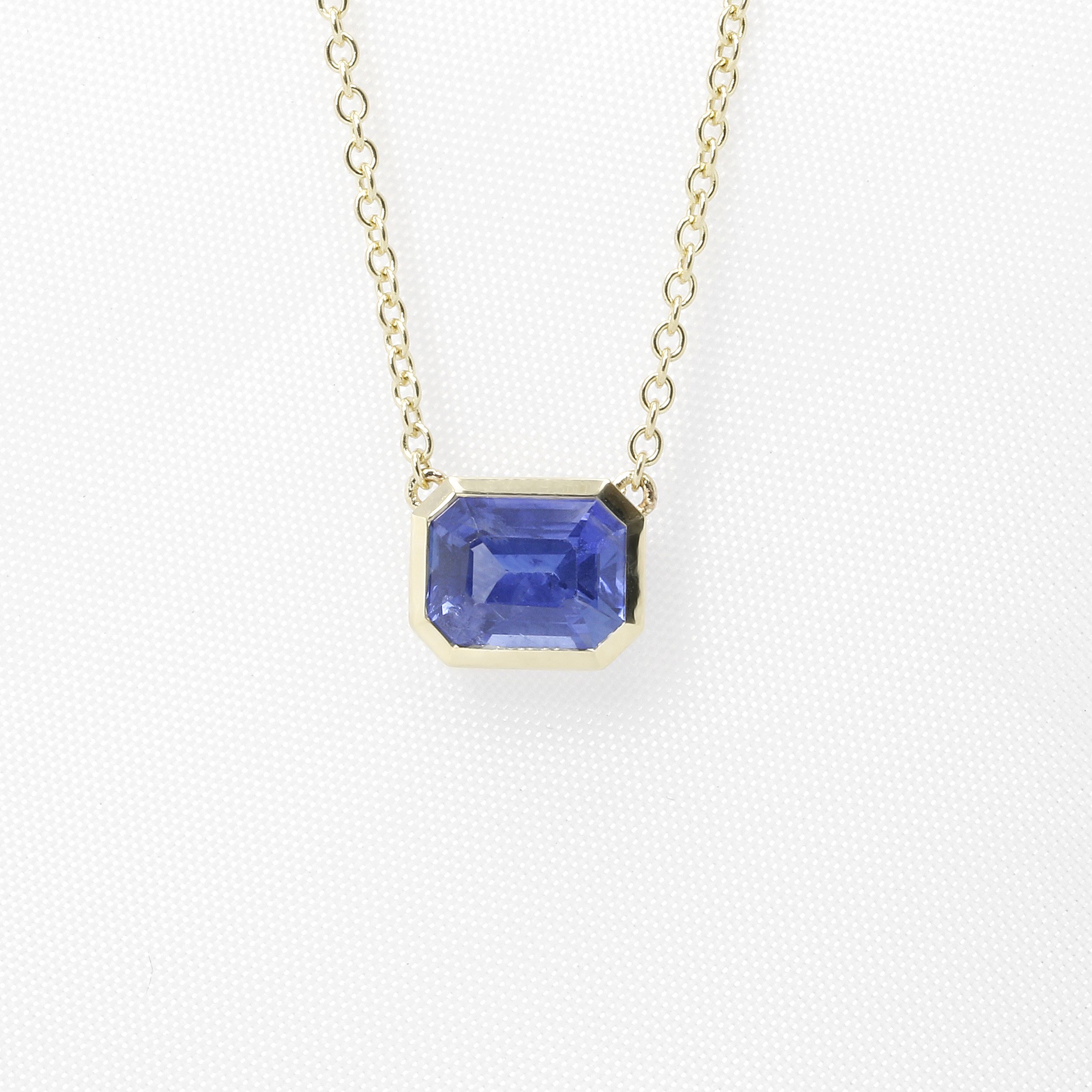All About Blue Sapphires
A Gemstone of Elegance, Strength, and Timeless Appeal
Second only to diamonds in popularity, sapphires are the leading choice for customers seeking a coloured gemstone with both beauty and durability. Revered for their deep, velvety hues and exceptional strength, sapphires are a timeless symbol of elegance and sophistication. Let’s explore these beautiful stones, learn where they come from and what gives them their stunning colours!
A Legacy of Lore, Royalty, and Prestige
Sapphires have enchanted civilisations for centuries. In ancient times, they were believed to offer protection from harm and envy. During the Middle Ages, they were thought to preserve chastity, reveal fraud, and protect against poison, plague, fever, and skin diseases.
This royal gem has adorned monarchs and nobility throughout history—perhaps most famously in Princess Diana’s engagement ring, now worn by Princess Kate. It continues to symbolise loyalty, wisdom, and nobility. Sapphires are also the birthstone for September and the traditional gift for a 65th wedding anniversary.
More Than Just Blue
While the classic rich blue sapphire remains the most iconic, this gemstone is found in an array of stunning colours, including pink, yellow, green, and even white. These “fancy sapphires” are increasingly sought after by those looking for a unique, luxurious alternative—and we’ll explore these in a separate post.
Blue sapphires owe their colour to traces of iron and titanium, and some may even exhibit slight colour shifts between natural and artificial lighting. Their shades range from inky midnight blues to lighter cornflower hues. Origin plays a big role:
Australian sapphires tend to be darker, due to higher iron content in the local geology.
Sri Lankan (Ceylon) sapphires are generally lighter, with vibrant tones and better clarity.
India (Kashmir) sapphires have beautiful rich blue tones but can have a milky haze in places due to microscopic boehmite mineral needles inside the crystals. These needles appear in all sapphires in different concentrations and we call these “silk”.
A Modern Favourite
Sapphires remain a beloved choice for vintage and contemporary jewellery—especially in engagement rings, earrings, and statement pieces. Their deep colours complement both white and yellow metals, and they pair beautifully with diamonds. The striking cool white of diamonds brings out the rich warm tones of the blue sapphires. Whether set in vintage-inspired designs or modern minimalist styles, sapphires bring sophistication to every setting. Dressed up for elegant evenings out or dressed down paired with crisp white t-shirts, designer jeans and a gorgeous jacket sapphires are versatile and everyone can wear blue. It is about finding the right shade that works for you!
Strength That Lasts
One of the sapphire's greatest qualities is its durability. Scoring a 9 on the Mohs scale of hardness—just behind diamonds—they resist most* scratches and everyday wear (*depending on what you’re doing whilst wearing them), making them ideal for frequently worn pieces like engagement rings.
They can generally withstand gentle knocks, ultrasonic cleaning, and routine washing with mild detergents like diluted washing-up liquid, making them both practical and beautiful.
Ethical and Sustainable Sourcing
As consumer awareness around responsible sourcing grows, sapphire mines, like diamonds are focusing on more sustainable options for conscious buyers. Many are mined, especially in Sri Lanka and Australia, via riverbed collection (rather than blasting) and regenerative practices of replacing top soil is being explored.
Sapphires form in metamorphic rocks, pegmatites, and alluvial gem gravels. They are often discovered by hand-sorting gravel rather than through heavy industrial mining and appear as water-worn pebbles which then need cutting and polishing.
Notable sapphire-producing countries include:
Sri Lanka
Australia
Kashmir (India)
Madagascar
Myanmar (Burma)
Kenya
Tanzania
Cambodia
Vietnam
Most sapphires are precision-cut in Thailand, a global hub known for its exceptional gemstone craftsmanship.
Treatments to Enhance Natural Beauty
The majority of blue sapphires are heat-treated to improve colour and clarity. Natural sapphires often contain rutile inclusions—tiny rutile or boehmite needles that can give the stone a hazy appearance. Heat treatment reduces these inclusions, resulting in a cleaner, more vivid gem.
While heat treatment is widely accepted in the industry, untreated sapphires with excellent colour and clarity are rare—and highly prized. These exceptional gems often appear in prestigious auctions at Sotheby’s and Christie’s.
At Timothy Roe, most of our sapphires are heat-treated only; we don’t buy diffusion-treated stones which is another type of treatment used to enhance stones. We want to work with as natural a gemstone as possible so that longevity, durability and stability are not compromised. Natural features like growth lines, colour zoning, and small inclusions help confirm their authenticity and uniqueness and are things we like to see as evidence the stone is natural.
Final Thoughts
Whether it’s their royal associations, their exceptional hardness, or their brilliant hues, sapphires continue to captivate and inspire. More than just a gemstone, a sapphire is a statement—of enduring strength, elegance, and personal style.











